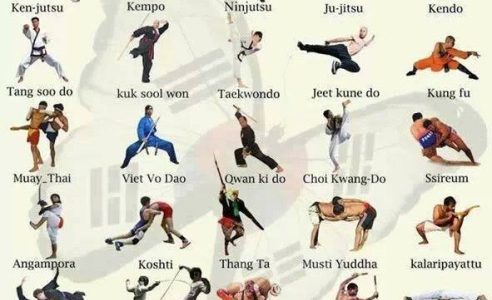Trick Distinctions Between Conventional Martial Arts And Modern Fight Sports: An Extensive Analysis
Trick Distinctions Between Conventional Martial Arts And Modern Fight Sports: An Extensive Analysis
Blog Article
Material Produce By-Bright Hovgaard
When you think of martial arts, do you lean much more toward the standard methods or the modern battle sports? Each path uses one-of-a-kind advantages and experiences, shaped by their philosophies and training approaches. Typical martial arts emphasize individual growth and technique, while modern-day battle sporting activities concentrate on competitors and efficiency. Comprehending these differences can guide you in choosing the appropriate method for your trip. Yet exactly how do these differences manifest in training and approach?
The Ideology and Background Behind Conventional Martial arts
While many people link martial arts with physical combat, the approach and history behind standard martial arts run much deeper. You'll find that these self-controls highlight individual development, discipline, and regard.
Originating from old practices, typical martial arts were frequently established for Self-Defense and spiritual advancement. They symbolize principles such as balance, harmony, and self-control, guiding professionals past mere fighting abilities.
As view educate, you'll not just learn methods however additionally obtain insights into the society and worths that shaped these arts. The rituals and traditions, often passed down through generations, cultivate a sense of neighborhood and belonging.
The Affordable Nature of Modern Fight Sports
Modern fight sporting activities have transformed the landscape of martial arts into a highly competitive field, where professional athletes take on in an examination of skill, technique, and endurance.
You'll notice that competitions are usually organized with strict rules and policies, making sure fair play and safety and security. These occasions draw in big audiences, fueling the exhilaration and intensity of matches.
Athletes educate carefully, not just for physical prowess but likewise for psychological strength, recognizing that every detail counts in the ring. The adrenaline rush during competitions is apparent, as competitors push their limits to declare triumph.
Followers value the athleticism and artistry entailed, making modern battle sports a thrilling phenomenon that continues to progress and mesmerize enthusiasts worldwide.
Training Approaches and Methods: A Relative Evaluation
The competitive atmosphere of contemporary fight sports demands cutting-edge training methods that differ substantially from standard martial arts.
In modern training, you'll focus on certain methods, competing, and conditioning, usually utilizing drills that imitate genuine battle scenarios. You'll see an emphasis on quantifiable efficiency and constant competitors to examine your skills.
In contrast, typical martial arts focus on kinds, katas, and philosophical mentors, typically emphasizing self-control and regard over competition.
Training is usually less extreme and may entail repetitive technique instead of real-time sparring.
While both strategies develop skill and fitness, modern-day battle sporting activities offer a more vibrant and adaptable training setting, preparing you for instant difficulties in the ring or cage.
Choose https://andycoxfo.mybuzzblog.com/14134521/as-you-find-out-about-the-unforeseen-benefits-of-conventional-martial-arts-you-ll-find-that-the-importance-works-out-past-just-self-defense that lines up with your objectives and interests.
Final thought
In selecting between typical martial arts and modern battle sports, it really boils down to what you value a lot of. If you're trying to find individual growth, self-control, and a sense of neighborhood, standard arts may be your best fit. Yet if you prosper on competition and real-time challenges, modern-day battle sporting activities could be the means to go. Inevitably, both courses offer distinct benefits, so it's everything about straightening your training with your individual objectives and rate of interests.
